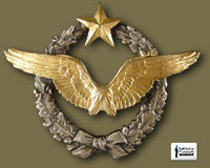D
Deleted member 5

École de l'air
"Exercise Golden Citadel"
TOP SECRET & CLASSIFIED
Course Name: Combat Pilot Training Skills trained: Advanced Air Force Fighter Pilot Training Location: Provence-Alpes-Côte d'Azur, France Exact Location: TOP SECRET |
Involved Fighter Units
| Air Force Squadron | Number of Participants & Aircraft | Aircraft That Will Be Part of Training |
|---|---|
1st MRCA Squadron | 20 pilots & 30 Aircrews | 12 unit of Dassault Rafale B |  |
2nd MRCA Squadron | 10 Pilots & 20 Aircrews | 12 unit of Dassault Mirage 2000C | |
Trainer Squadron | 20 Pilots & 30 Aircrews | 12 unit of Dassault/Dornier Alpha Jet |  |
Other Equipment Will Be Involved in Exercise Golden Citadel
3 units of TRS 3445 Suricate Radar |
2 units of RAC-3D Tactical 3D Radar |
4 units Crotale NG MK3 Surface to Air Missile System |
The course lasts 2 weeks, afterwards the following insignia would be given to the participants, indicating they mastered the given skill: Fighter Pilot Badge with 1 Star

Last edited by a moderator:




